This week Women in STEMM AUSTRALIA co-founder Dr Marguerite Evans-Galea shares her closing address from the Asia-Pacific Economic Cooperation (APEC) Women in STEM Workshop: “Expanding Opportunity and Innovation by Strengthening the Presence of Women in Science, Technology, Engineering and Math” which was part of the APEC Women and the Economy Forum held last month in Lima, Peru. Dr Evans-Galea was the invited Keynote speaker and as a leading advocate for women in STEMM in Australia, she shared some of the outstanding national-level initiatives now underway, including the Science in Australia Gender Equity (SAGE) pilot of the UK’s Athena SWAN program, Male Champions of Change in STEMM, Women in STEM and Entrepreneurship and Women in STEMM AUSTRALIA. She also discussed various state and local initiatives and other projects with delegates throughout the day. The organisers also asked Dr Evans-Galea to share her thoughts and perspective on the progress made across the 21 member economies at the end of the day. This is what she had to say.
***
Expert Remarks: Creating an Enabling Environment for Women in STEM
Paradigm-shifting science and innovation takes time and requires a diverse workforce of highly-skilled scientists that specialise in these fields.
In Australia, we encourage the Government to look forward into the next decade and beyond, to value discovery and envision a future health and economy that has science, technology, engineering, math and medicine (STEMM) at its core. STEMM will be central – and essential – to Australia’s success in the next 50 years.
Australia must be able to compete on the global stage of research discovery and innovation. We will need to overcome a broad range of challenges related to health, water security and food production. We face unique challenges around the health and education of Indigenous Australians, the availability of arable land and the conservation of our native flora and fauna – all in the context of climate change and a growing population.
We must ensure we are prepared and resourced for such challenges. Not only do we need the best infrastructure, equipment and technologies, but we also need a readily adaptable workforce that is highly-skilled in the latest technologies, but more importantly, has a diverse range of ideas.
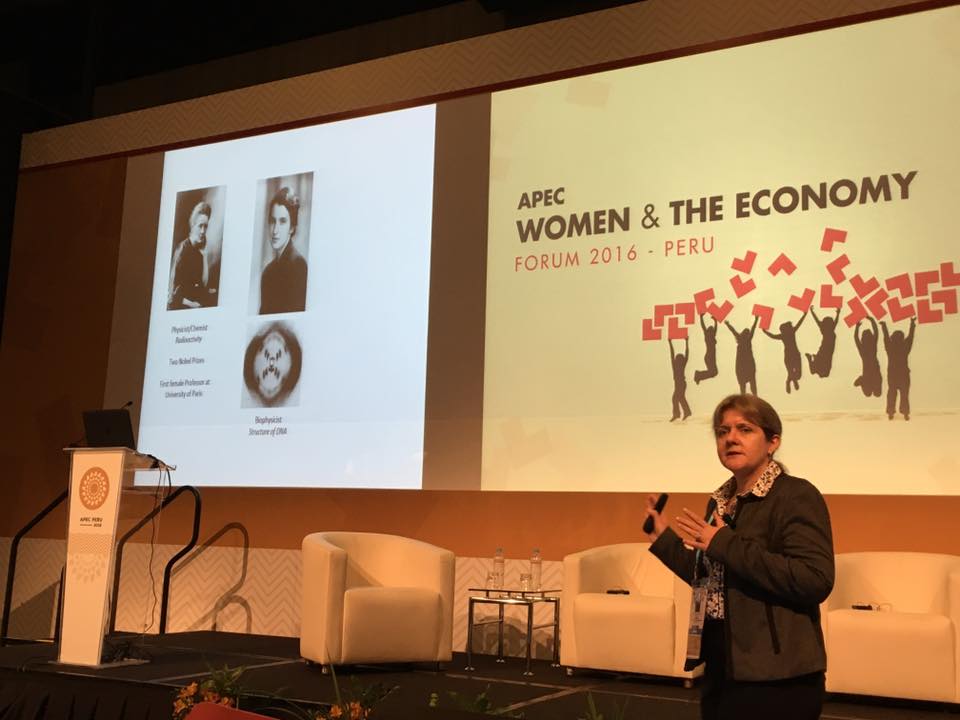
I’m not a diplomat or a politician, I am a researcher – I am a woman in STEMM. I left my laboratory waaay Down Under to be here today in Peru at the inaugural APEC Women in STEM Workshop. My message is clear: “Now is the time. This is our moment. We cannot let it pass us by”. And I have to say, I am heartened by what I’ve heard presented at this workshop.
Ms Julia Santucci, Senior Policy Advisor in the Office of Global Women’s Issues in the US Department of State, USA set the stage highlighting the fact that having fewer women in leadership roles in STEM is a global phenomenon. Julia overviewed the situation in the USA, stating jobs in STEM are higher paying and rapidly growing, women in STEM earn one third more than women in non-STEM careers and, that it was recently reported by McKinsey and Company that Silicon Valley could gain US$25 billion in gross domestic product by 2025 if it could close the gender gap in technology. Julia reiterated there are clear economic and social benefits and that improved diversity increases innovation and productivity. Importantly, she emphasised that APEC is known for ground-breaking initiatives such as those in discussion. Ms Louise Williams, Principal Associate and Gender Advisor, US-APEC Technical Assistance to Advance Regional Integration (US-ATAARI) with Nathan Associates is leading the APEC Women in STEM study and she shared some of the latest data she and her team have collated - the beginnings of a comprehensive report and action plan with a set timeline for implementation. In addition to the US data collected, 12 of the 21 member economies have responded to date - including Australia. Preliminary data indicate that several countries have successfully increased the number of women in engineering. The Framework for this study has four key components: Enabling Environment, Education, Employment and Entrepreneurship. The APEC Women in STEM study will expand in the coming months and aims to identify the constraints, ask which policies can be introduced and determine what needs to be prioritised - and this could be different for each economy. The full report will be released in October 2016 along with a call to action [update: full report available here].
What is it going to take?
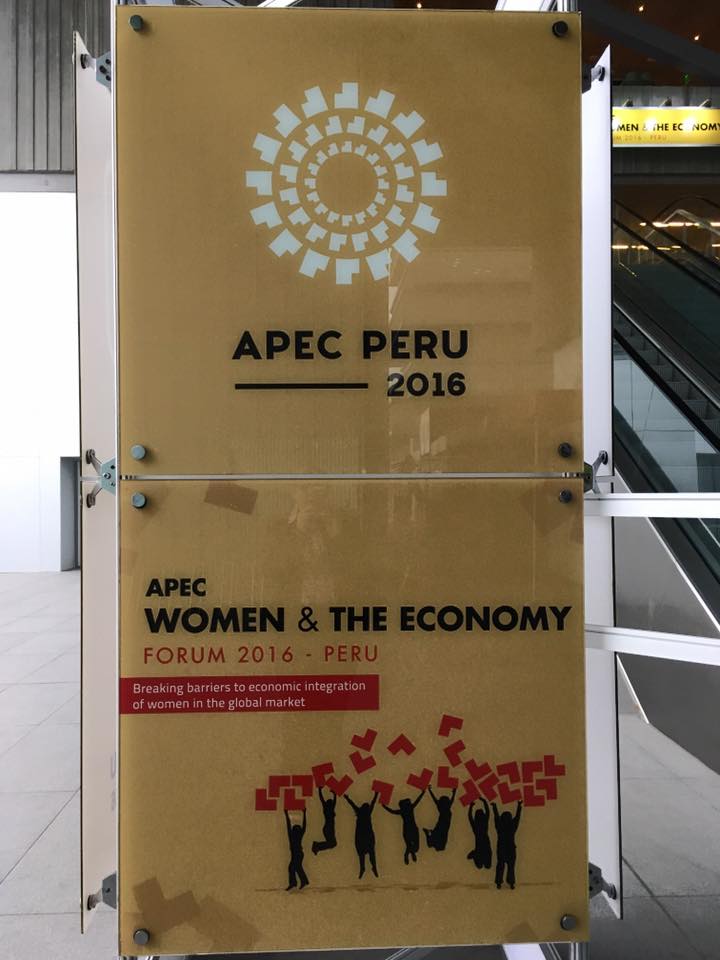
Erin Hogeboom, Community Development and Network Strategy Manager with the National Girls Collaborative Project (NGCP) said the US Government had shone a spotlight and provided a ‘megaphone’ for women in STEMM in the US, boosting initiatives and programs such as the NGCP, which has created an extensive, highly collaborative network for girls in STEM.
Visionary leadership at the highest levels sets the foundation for creating a vibrant innovation ecosystem.
We need proactive organisations with inclusive policies and practices that facilitate the retention and advancement of women in STEMM to the leadership level. Seema Kumar, Vice President of Innovation, Global Health and Policy Communication with Johnson and Johnson (J&J) in the USA, said that J&J considers gender equity and diversity a “business imperative”. The company has metrics and KPIs on inclusion and collects ongoing data. There is also an in-house Women’s Leadership Initiative that provides sponsorship and mentoring for women in STEM, teaching women to lean in, provide them role models as well as educating men around the issues women face and how they can aid in their professional development and facilitate their progression to leadership roles. Alba San Martin Piaggio, General Manager for Peru and Bolivia with CISCO, Peru spoke about the ‘safe place to share and ask questions’ created by the CISCO Connected Women Program. Tracy Bame Abernethy, Director of Social Responsibility and Community Development, Freeport-McMoRan in the US, spoke about the partnerships her organisation has made with a large number of universities, building relationships, establishing collaborations and targeting women in STEM.
In Australia, the SAGE pilot of the UK’s Athena SWAN program will reward progressive institutions that examine their workforce, look for the gaps and implement policies and practices to propel women in STEMM into leadership roles. They will be the organisations with gender balance on their Boards and decision-making committees, family-friendly practices, and that publicly promote their women in STEMM and facilitate their career development through mentoring and leadership opportunities. For example, the Walter and Eliza Hall Institute of Medical Research recognises the challenges for women in STEMM and holds meetings between 9:15am and 4:30pm, provides technical support during maternity leave, as well as competitive Fellowships and childcare awards. They also extend contracts by 12 months for every child a woman Laboratory Head has during her tenure.
We need proactive leaders – men and women who together champion tolerance, inclusion and positive change. Male Champions of Change was founded by Elizabeth Broderick, Australia’s former Sex Discrimination Commissioner. She is now leading the new Male Champions of Change in STEMM program which aims to bring 10-20 male leaders in STEMM together to advocate change and lead by example. They commit to a strategy focussed on gender equality. They have a shared purpose, clear priorities and a public commitment to use their individual and collective leadership and resources to advance gender equity. Ms Broderick is also the new Chair of the Expert Advisory Group for the SAGE pilot. This role will provide her valuable insight into the current gender equity and diversity policies at higher education and research organisations, which can then feed back into the Male Champions of Change in STEMM program. Gabriela Gonzalez, Deputy Director for US and Latin America with Intel in the USA agreed it was essential to change the system, not the women. Pia Wilson-Body, Director of Strategic Alliances with Intel in the USA outlined the recruitment process and how leaders are encouraged to take a proactive approach when recruiting and to engage their networks.
I’m inspired by the strong commitment to women in STEMM demonstrated by the presence of high level leaders from the APEC economies here today.
We need proactive educators. Evidence-based STEMM training and critical thinking skills must be taught and embedded within the school curriculum throughout our education system – private and public.
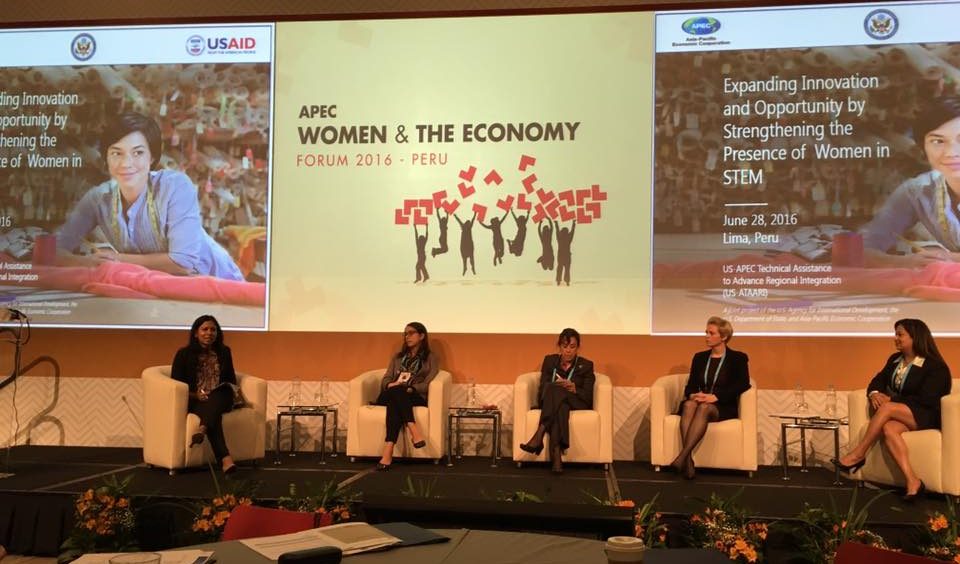
Our focus is on high school grades 9 and 10 – our 14 to 15 year old students and their science and math teachers. This is when children tend to lose interest in STEMM. We have connected with the Alliance of Girls Schools Australasia and made strong connections with other organisations that engage with schools and young people such as the Foundation for Young Australians and the Tech Girls Movement.
Dr Judith Zubieta, Director of Social Research at the National Autonomous University of Mexico urged us to reconsider how we speak about science and research, saying that a shift in the language can make a difference in engaging students. Instead of saying “let’s do some math”, the approach is “let’s do something fun” - this makes learning math interactive and exciting. Much like sneaking the vegetables in with the spaghetti! It’s good for you, but you don’t even realise it’s there. STEMM by doing engages children and keeps them excited and interested about learning something new. Erin followed up reminding us that including a creative aspect (think STEAM - A for arts) also makes STEMM more engaging. STEMM requires a significant degree of creative thinking. It is exciting to hear about the upcoming WiSci Summer STEAM camp in Peru for girls from Chile, Mexico, Peru and the USA - a public-private partnership between Girl Up, the US Department of State and other partners.
My daughter is 14 and her school has new STEM and coding teachers. She and her classmates now have 3D printing, robotics, imaging and ‘wearable tech’ as part of their daily learning. Through Women in STEMM AUSTRALIA, and nerdy scientist parents like me, this is just one of the schools that has engaged with women researchers in the STEMM sector. Careers sessions at schools, meet-a-scientist, laboratory visits, exchanging ideas and sharing expertise and information on the latest initiatives for innovation and entrepreneurship. These teachers and students now feel like they are part of the larger STEMM ecosystem, they have access to information and networks, they follow researchers on social media, they attend our events and they want more. It is exciting!!
Mariana Costa Checa, Co-founder of the highly successful Laboratoria in Peru spoke about how empowering STEMM is for women and girls - STEMM gives hope. Mariana works closely with girls from a lower socioeconomic background who are experiencing a “double-disadvantage”. It was terrific to hear about the positive impact of Laboratoria in these girls’ lives. Women in STEMM Australia also wants to ensure children in rural and regional Australia, and those from lower socioeconomic backgrounds, have access to STEMM programs for free. For example, we are keen to see groups like Coderdojo establish computer coding clubs in such areas. Our blog is our cornerstone feature sharing information, perspectives, career journeys and advice to our broad online readership, which is primarily young women and girls interested in STEMM. We also interview and post profiles of Australia’s women and girls in STEMM to share their love of their chosen field and to demonstrate the broad range of career pathways and opportunities available within the sector.
We also need to be proactive personally. As women in STEMM, we need to take responsibility for our own actions, words, learning and development. We must seek to understand the array of individuals around us, develop a team of mentors, extend our professional network, seize opportunities and put ourselves forward. Dr Gisella Orjeda, President of the National Council of Science, Technology and Technological Innovation (CONCYTEC) in Peru, shared her remarkable journey in science which has traversed research and policy, and seen her develop into an outstanding leader. She spoke about the decisions she’s made, the road she chose to travel. We must own our achievements, embrace our strengths and work on our weaknesses. It is crucial we empower each other and call out bias when we see it. Importantly, we must pay it forward and bring other women with us, help them to find their path and accelerate their professional development. Wonderfully, we have seen some tremendous examples of this today.
A vision for the Australian STEMM sector
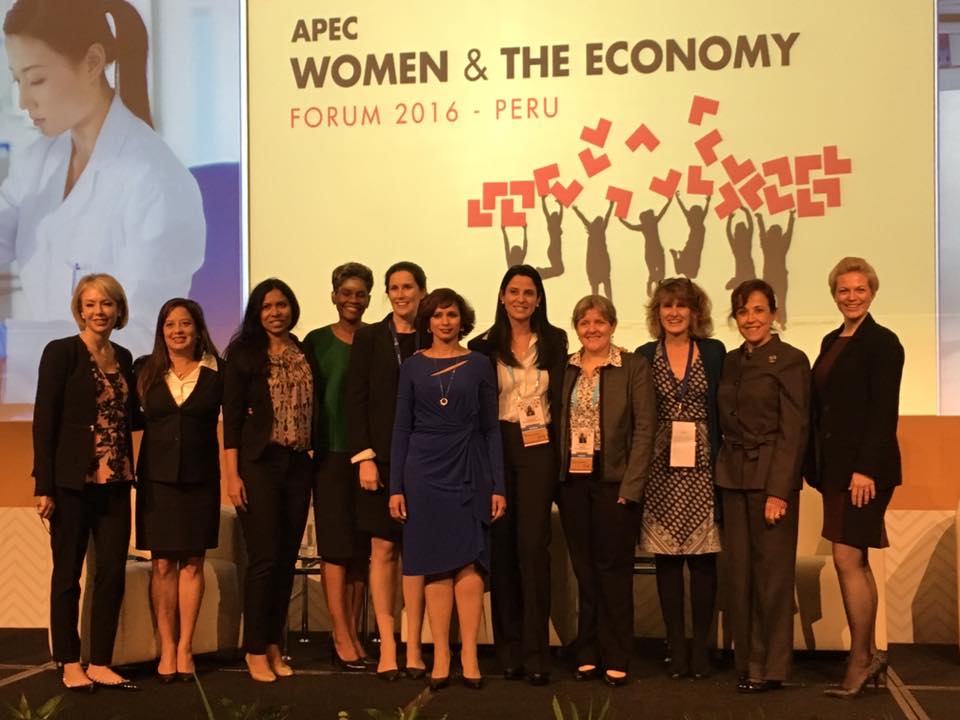
We must prepare our next generation in STEMM to navigate this ‘new future’ so they can lead us in overcoming the challenges we are all yet to face. With the right training, opportunities and support, they will successfully become our economies’ leaders in STEMM – and with an inclusive approach, braver conversations and visionary leadership, half will be women.
Let’s move beyond the way things have been done for the past 50 years. We need to look forward, embrace this shift and help it gather momentum. We need support from all economies and across all sectors, to position our region at the leading edge of the wave to develop an innovative STEMM sector with a diverse workforce. Let’s harness the full potential of that workforce. Let’s learn from each other. Let’s proactively collaborate to boost our health and economies, and create a vibrant Asia-Pacific ecosystem of innovation where more women in STEMM can lead and excel.
This is bigger than you, it’s bigger than me. So let’s tune out the noise, proceed with gusto and make it happen!
About the author:
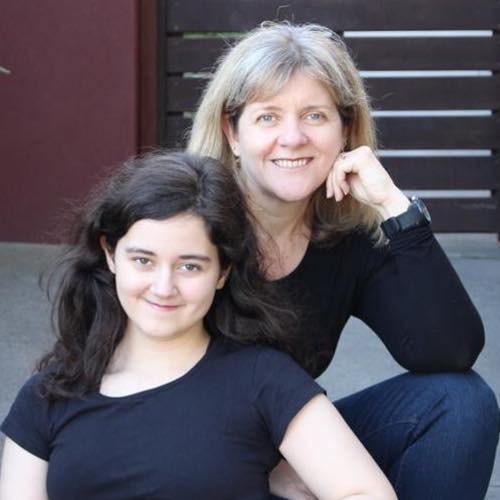 Dr Marguerite Evans-Galea is a Team Leader in Genetic Health Research at the Murdoch Childrens Research Institute (MCRI). She leads international collaborations to develop cell and gene therapies, identify epigenetic modifiers and biomarkers, and investigate disease mechanisms in the neurodegenerative disease Friedreich ataxia. Marguerite has received Young Investigator Awards from the Australasian Gene and Cell Therapy Society (AGCTS) and the Friedreich Ataxia Research Alliance USA, a MCRI Leadership Award, travel awards to present her research internationally and an Australian Leadership Award. Strongly committed to empowering early career researchers and women in STEMM, Marguerite mentors several students and postdoctoral fellows and was the founding Chair of the Early-Mid Career Researcher Forum with the Australian Academy of Science. Marguerite currently serves on the American Society for Gene and Cell Therapy Immune Responses Committee, the AGCTS Executive and the Australian Science and Innovation Forum. She is also a member of the Science in Australia Gender Equity (SAGE) Expert Advisory Group and Co-Founder of Women in STEMM AUSTRALIA. A passionate advocate for science, Marguerite writes for multiple journals and magazines, and is active via social, national and international media. She especially enjoys spending time with her daughter Breana.
Dr Marguerite Evans-Galea is a Team Leader in Genetic Health Research at the Murdoch Childrens Research Institute (MCRI). She leads international collaborations to develop cell and gene therapies, identify epigenetic modifiers and biomarkers, and investigate disease mechanisms in the neurodegenerative disease Friedreich ataxia. Marguerite has received Young Investigator Awards from the Australasian Gene and Cell Therapy Society (AGCTS) and the Friedreich Ataxia Research Alliance USA, a MCRI Leadership Award, travel awards to present her research internationally and an Australian Leadership Award. Strongly committed to empowering early career researchers and women in STEMM, Marguerite mentors several students and postdoctoral fellows and was the founding Chair of the Early-Mid Career Researcher Forum with the Australian Academy of Science. Marguerite currently serves on the American Society for Gene and Cell Therapy Immune Responses Committee, the AGCTS Executive and the Australian Science and Innovation Forum. She is also a member of the Science in Australia Gender Equity (SAGE) Expert Advisory Group and Co-Founder of Women in STEMM AUSTRALIA. A passionate advocate for science, Marguerite writes for multiple journals and magazines, and is active via social, national and international media. She especially enjoys spending time with her daughter Breana.
Acknowledgement: Dr Evans-Galea extends her thanks to APEC and the organisers of the APEC Women in STEM Workshop for the opportunity to present and for their leadership on this important topic. She also thanks the participants and delegates for sharing openly in a collaborative way to benefit all.
One thought on “Boosting Australia’s Health and Economy: fostering an environment where more women in STEMM can lead and excel”
Comments are closed.